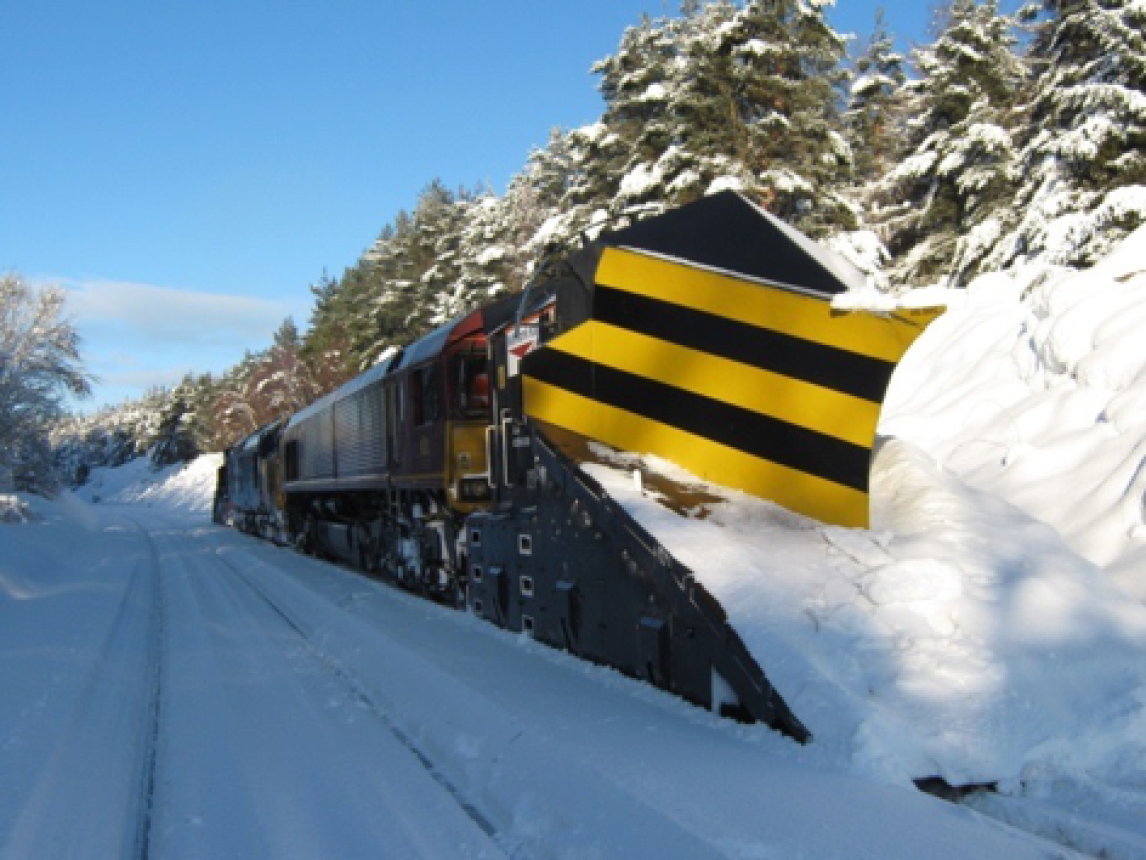Published on: Sunday, 25 February 2018
Last updated: Sunday, 25 February 2018
When wintry weather arrives, Greater Anglia and Network Rail work together, with extra staff on hand to reduce the impact of snowy conditions on train services.
Railway staff help to keep customers safe and services running as well as possible, including clearing platforms of snow and ice, de-icing train doors, and running trains with snow ploughs to keep the tracks clear.
Our performance teams plan for all types of weather and regular conferences between all our depot, fleet and customer service teams and Network Rail ensure that the correct actions are being taken across the business to prepare the train fleet for maximum reliability. These include:
- Fitting train warning horns with ‘snow socks’ which prevent snow getting into the horns - as without a horn trains cannot go above 20 mph for safety reasons, resulting in delays;
- Having extra staff armed with special backpacks who will spray de-icer onto train doors (which can become jammed with snow and ice) as they come into the station;
- Running trains fitted with snow ploughs before the start of service so that the tracks are clear;
- Fitting a special gauze to the traction motors on our Class 317 and 321 commuter trains to protect them from melt water and snow which can get drawn into the train’s electrics and cause a breakdown;
- Covering couplers (which join carriages together) to prevent them from freezing.
How could the ‘Beast from the East’ affect train services?
Just as traffic on roads has to run slower in extreme weather conditions, so does the railway which can lead to cancellations to prevent trains becoming displaced or congestion occuring.
Rural routes can be particularly affected as it’s difficult to keep them clear of snow. On busier routes, the volume of traffic prevents the snow from settling too deep, like on roads, but on rural routes the traffic isn’t frequent enough.
When a train has to slow down as it approaches a station or set of points (which allow trains to change between tracks), this can cause snow to compact on the rails and turn into solid ice. This can clog up the points and stop them from working.
Steel rails can freeze together if they become too cold. When this happens, signals stay red and trains can’t move.
Wind is another problem. If it causes snow drifts deeper than 30cm, or about a foot, trains can’t run safely unless they’re fitted with snow ploughs.
Very cold and wintry conditions can also affect the trains themselves, with ice build-up jamming doors, for example.
Whilst we will be doing everything we can to keep services running, our performance teams have drawn up contingency plans for how Greater Anglia will continue to operate in snowy conditions and emergency timetables have been prepared for use in case of very severe weather.
Network Rail has also made preparations for keeping the tracks operational where possible by deploying teams to check that point heaters (which defrost the track’s points) are in working order, organising ‘icicle patrols’ and special teams who are located at critical junctions ready to clear the points of snow as required.
If required, they will also organise snow ploughs and use special trains known as ‘Ice Maidens’ which operate before the start of the train service to clear some lines and make them passable for passenger trains.
If bad weather is forecast, Network Rail and Greater Anglia communicate via ‘Emergency Weather Action Teams’ conference calls to decide what action to take and whether any amendments are required to train services.
Sometimes trains will have to run more slowly through snow and ice, just as cars have to slow down on icy roads. This means we may have to cancel some services, as slower speeds mean that we cannot maintain the whole timetable, as trains can become displaced or congestion occurs.
Helping you on your journey
Any amended timetables are confirmed by 1600 the day before the forecasted weather is due to arrive and communicated to customers via the Greater Anglia website, Twitter and at stations, etc. so please make sure you check before you travel.
We are very sorry if disruption occurs while you are travelling. On train and station staff and our Customer Actions Teams in their bright pink vests will be on hand to keep you updated with information and get you on your way as quickly as possible.



